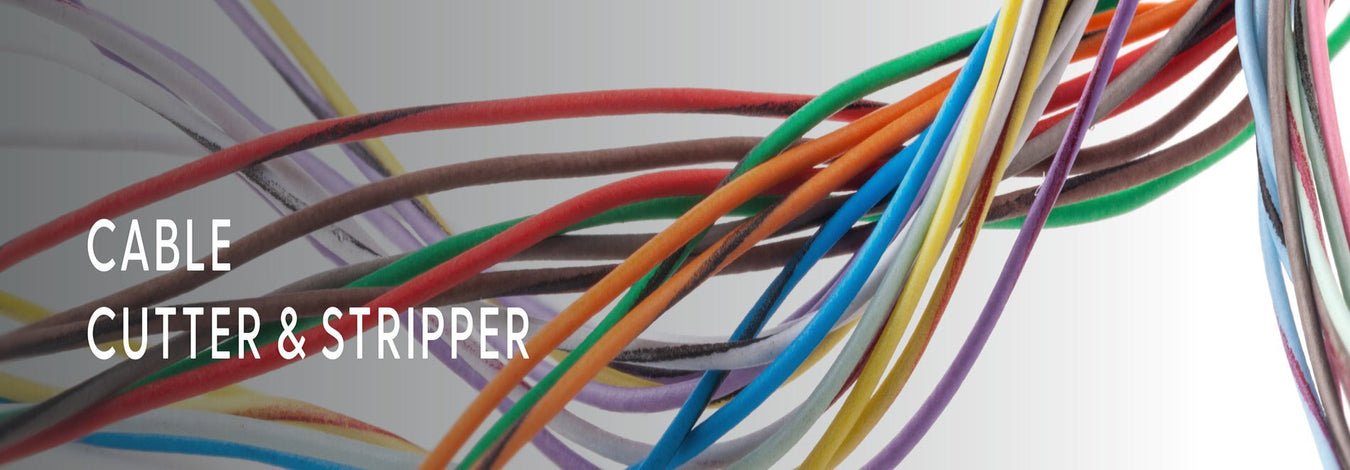
How Can I Use a Handheld Crimper?
Crimping is one the most reliable ways of joining cables to connectors/terminals in electrical work. It has gradually gained popularity as an alternative to soldering. To complete this process, you’ll need a unique tool called a crimping tool or crimper. This tool is designed to deform the barrel/collar of a connector around the wire conductor or both to create a secure and reliable connection. A handheld crimper or hand crimping tool is one of the most common types of crimpers used by DIY enthusiasts and professionals across industries such as telecommunications, automotive, and electronics.
What makes handheld crimping tools stand out? First, they’re portable and easy to use even in tight spaces. The operating mechanism (ratcheting mechanism) is also straightforward, allowing users of all levels to make quality crimp connections consistently. Another significant aspect of handheld crimpers is that they often come with interchangeable dies/jaws, making them versatile. Lastly, these crimpers are pretty affordable. A good example is the iCrimp HSC8 6-6 Self-adjustable Crimping Tool.
Understanding how to use a handheld crimper is important, and that’s what we discuss down here.
How to Use a Handheld Crimper: Step by Step
1. Select the right die/jaw
As outlined above, an ideal handheld crimper features interchangeable dies or jaws, allowing you to crimp connections using connectors and wires of different gauges/sizes. Start by selecting the right die/jaw for the connectors/terminals you want to crimp. The jaw chosen should match the size and shape of your connector. Usually, interchanging dies/jaws is pretty simple and often requires basic tools such as screwdrivers.
2. Strip the wire
The next step entails stripping the wire to remove insulation where the connector will be positioned for crimping. For the best results, consider using a wire stripper. You should strip about 5 mm of the insulation from the end of the wire or roughly equal to the length of the barrel. However, check the stripping length specifications provided by the connector’s manufacturer.
3. Position the connector/terminal on the crimper’s jaws
Hold your crimp tightly as you squeeze the handle to allow full opening of the crimper’s jaws. Then, position your connector/terminal on the right jaw. Some hand crimpers have color coding on the jaws matching a terminal’s insulation color to help users identify the correct jaws to use. Gently squeeze the handles to hold the terminals/connectors in place. More importantly, ensure the terminal’s barrel is aligned correctly with the jaws.
4. Insert the wire into the crimp connector/terminal
The next step is to insert the stripped end of the wire into the crimp connector, ensuring all the wire strands are inserted.
5. Squeeze the handles to crimp the connectors
Once the stripped wire is well aligned on the connectors, you should squeeze the handles of your hand crimping tool to make a crimp connection. If your hand crimper uses a ratcheting mechanism, squeeze the handles all down. The crimper will automatically release once you’ve completed the crimping cycle.
Read more: Difference Between a Ratchet Crimper and Non-ratchet Crimper
6. Inspect the crimp
Now, you can remove the connector from the crimper’s jaws and carefully inspect the quality of the crimp connection. A good crimp connection should be solid, and wire strands should not pop out.
Read more: How to Validate a Crimp Quality
Repeat steps A to F for other crimp connectors you want to crimp. Watch the video below on using a handheld crimping tool.
Bottom line
Handheld crimpers are quite useful tools for making reliable electrical crimp connections. It’s worth noting that there are different types of hand crimpers for different kinds of connectors, from bootlace terminals and IP68 connectors to weather pack terminals. By following the above steps, you can tell that using a handheld crimping tool is not complicated.
However, choosing the right crimper for the type and size of connectors you intend to work with is essential. iCrimp offers a variety of quality handheld crimpers for various types of connectors. Our crimpers are quite versatile, ergonomically designed, and affordable.
References





